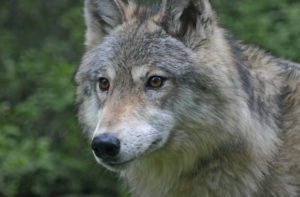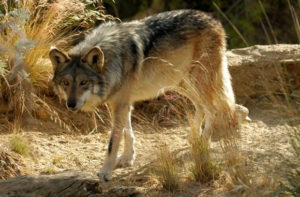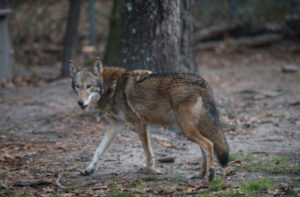The most abundant wolf species in North America is the gray wolf. There has been a significant amount of media attention focused on the plight of this iconic species, and with good reason. However, two other wolf species also call North America home – the Mexican wolf and the red wolf. These two species are often overlooked, both in media and in the public eye, even though they are critically endangered. North America’s three wolf species inhabit different ranges and each play a particular role in their ecosystems. Unfortunately, all three need protection, and historically, the United States has done a poor job of providing individual state and federal protections for wolves.
Gray Wolves Nearly Driven to Extinction

Although estimates vary, there are now approximately 16,000 – 18,000 gray wolves currently in the United States. Even though gray wolf numbers have steadily increased, the species still only inhabits approximately 10% of its historic range. Because of this fact, many conservationists and scientists still classify the gray wolf as an endangered species when compared to other previously listed endangered species who recovered to 50-75% of their historic ranges, despite the fact that gray wolves were delisted from protections under the Endangered Species Act in January 2021.
After the delisting, gray wolf management returned to the states, some of which are hostile towards the species. Montana passed a slew of new wolf hunting and trapping regulations including, but not limited to, allowing the use of neck snares, expanding the wolf trapping season by 30 days, incentivizing wolf trapping by providing bounties, and allowing hunters to kill an unlimited number of gray wolves.1 Idaho may be the most extreme; it passed a law that will allow the killing of 90% of its gray wolf population.2 Among other cruel provisions, Idaho’s new law will also allow year-round wolf trapping, the hiring of private contractors to kill wolves, and the use of snowmobiles and all-terrain vehicles to hunt, chase, and kill wolves.
Recovery Efforts Abandoned for the Mexican Wolf

Only around 18 Red Wolves Remain in the Wild

Take Action for North American Wolves!
After human persecution brought them to the brink of extinction, the three wolf species in North America have barely begun to recover before their federal protections were removed or their recovery programs were abandoned. Wolves are still functionally extinct in the vast majority of places where they used to live and federal protections are essential to help all three species return to where they used to roam. The United States must do more to provide much needed protections for one of North America’s iconic animals.
Take action for gray wolves by signing our petition urging the U.S. Fish and Wildlife Service to restore Endangered Species Act protections to the species. And, please keep an eye out for actions you can take to support the recovery of Mexican and red wolves.
Keep Wildlife in the Wild,
Julie

 Dear Reader,
Dear Reader,